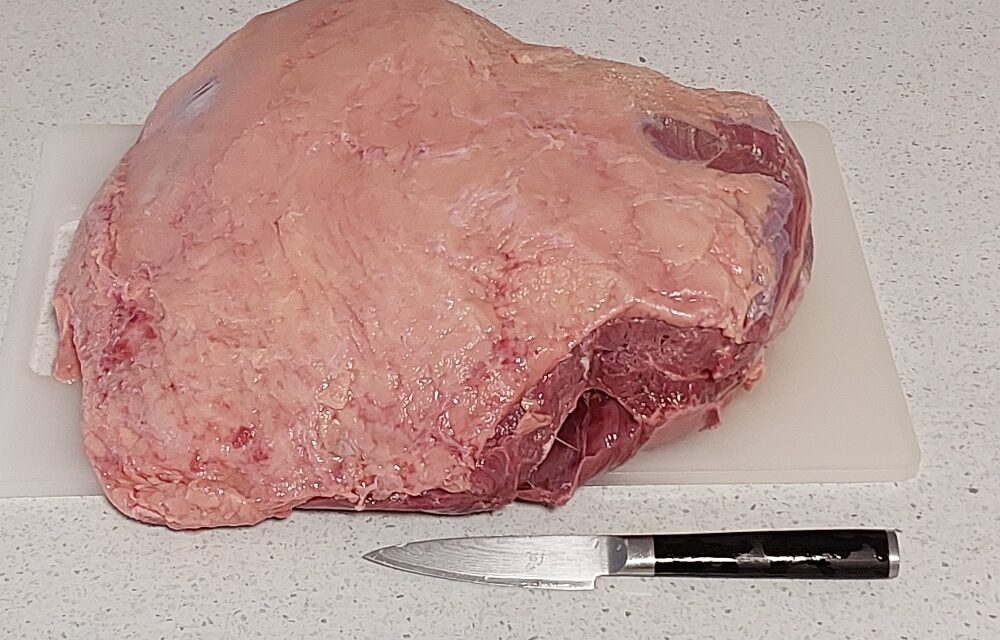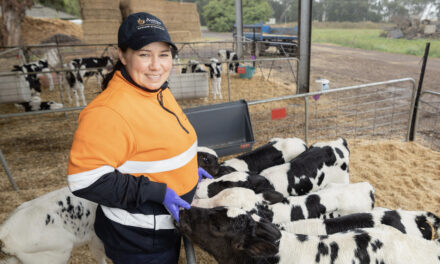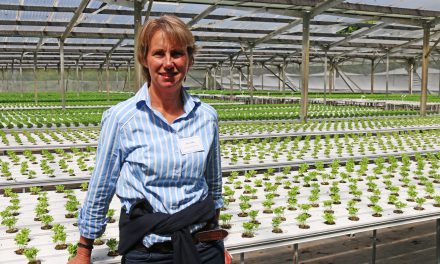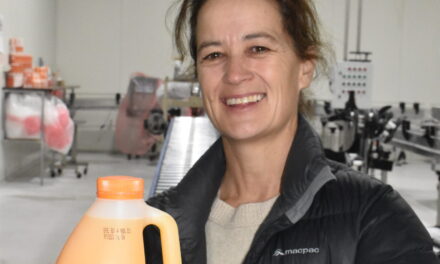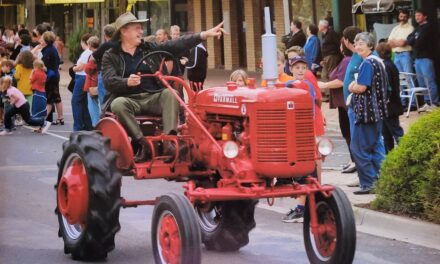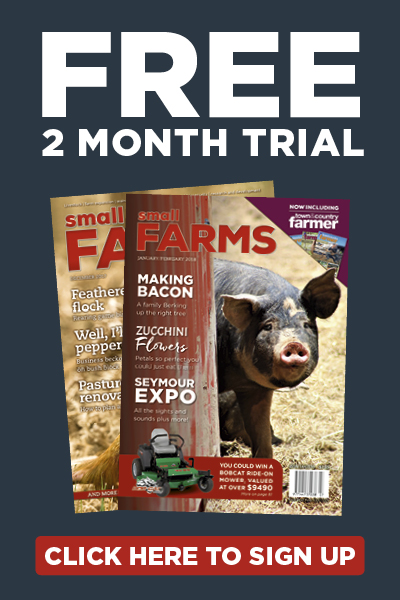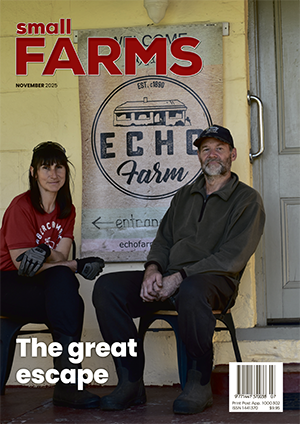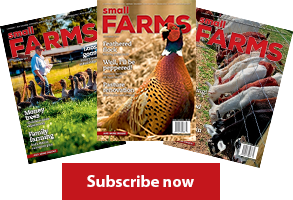STEVE BAIN says home butchery can be approached fairly simply and economically.
Shop around and you’ll likely find whole rumps for sale much cheaper than rump roasts and/or rump steaks.
All it takes is a sharp knife to save some money.
And the following method, I reckon, is the simplest approach to home butchery.
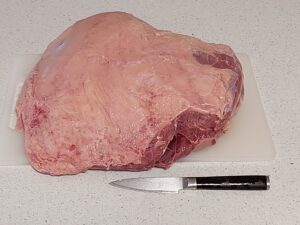
Step 1: Start with a whole rump from the butcher (or mobile butcher) and a knife.
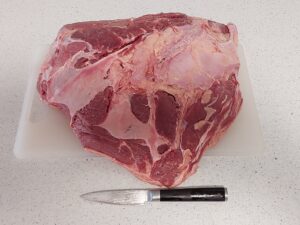
Step 2: Flip the rump over to expose the seams (which are the joins between the muscles/meat).
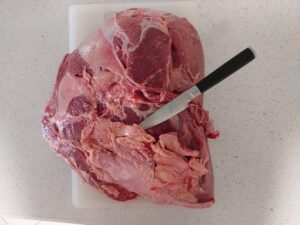
Step 3: Use the tip of the knife to cut away the lard.
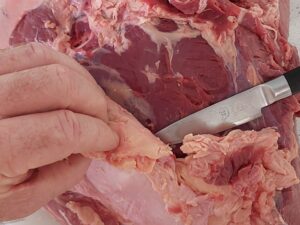
Step 5: Much of the lard can be peeled back and will lift away from the meat without any knife-work. Here and there you may need to flense the lard away from the lump of rump.
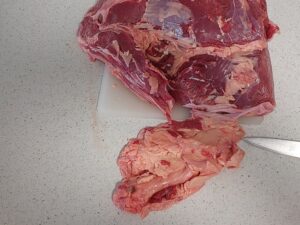
Step 6: Keep trimming and peeling away to remove the lard. The lard has many uses, including in sausages and/or casseroles.
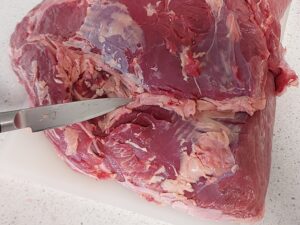
Step 8: Now we start on an internal seam (this time to remove the piece known as the rump cap, and also known more recently as the picanha).
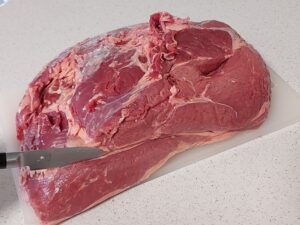
Step 9: Here the knife points to the seam into which we will dig in order to separate the picanha from the remainder of the lump o’ rump.
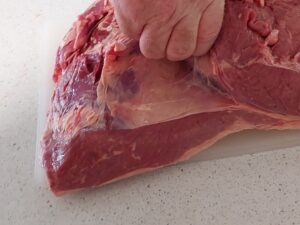
Step 10: Like we did with the lard, stick your fingers down into the seam and peel the lumps of meat on either side apart.
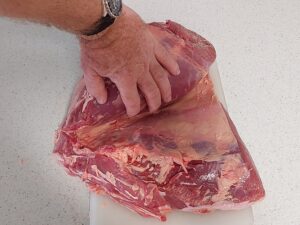
Step 11: Rolling the roasts apart.
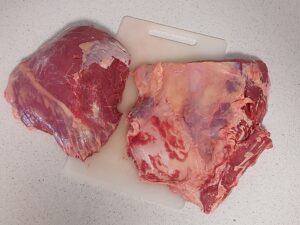
Step 12: On the right as you look at the picture is the picanha/rump-cap removed from the rump.
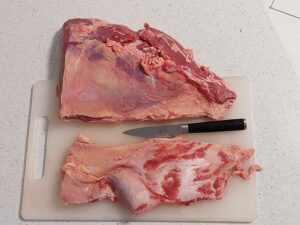
Step 13: Trim the fat flap away from the rump cap.
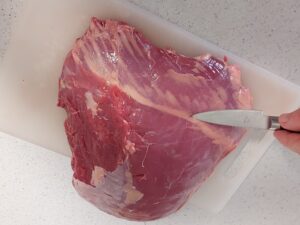
Step 14: Continue to break down the lump of rump. Again the knife points to a seam.
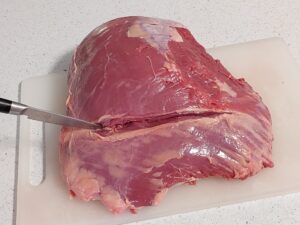
Step 15: To remove another roast, start by cutting through the thin surface membrane to expose the seam (the seam of fat).
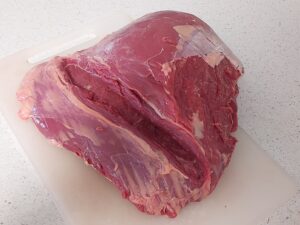
Step 16: Using your fingers, pry the seam apart to a depth as deep as you can without using a knife.
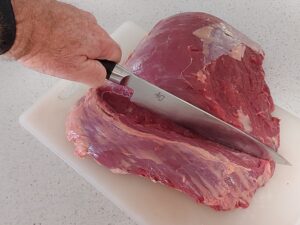
Step 17: Now cut straight down through the lump of meat; cut fully through from the seam that you’ve started all the way to your cutting board/butcher’s block.
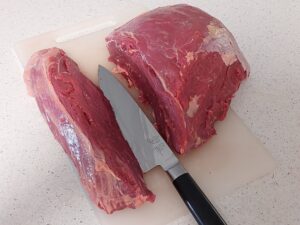
Step 18: Another roast cut away from the lump o’ rump; this roast weighs 750 to 800 grams (family sized).
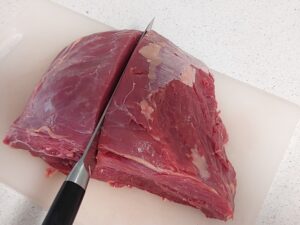
Step 19: Now cut the remaining piece into two roasts that weigh about 850 grams. These two roasts will contain some more of the connective and seam tissue; accordingly they are typically cooked slower using a wet roasting technique.
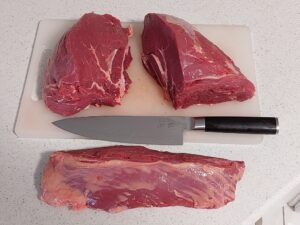
Step 20: Three roasts (plus the picanha which is not shown in the photo) from the rump.

